 |
 |
| |
|
Now you can be suave and urbane by reading
Fabulous Frog Culture by Dick Brafford |
|
 |
 |
|
Francois Mansart 1598-1666 is the French
architect credited with introducing classicism during the
Baroque period of architecture in France. He was a major proponent
and innovator of a new classical development in the 17th Century.
One of his famous signature inventions, which became known
as the Mansard roof, can be seen on palaces and chateaux across
Europe. It became synonymous with defining the architectural
style of the Bourbon kings of France. The Mansard roof’s
basic characteristics are its two slopes on all four sides,
with the lower slope nearly vertical and the upper nearly
horizontal. From the bottom line to the midpoint of the steep
slopes, he incorporated gable windows, normally oval shaped,
and slender ornate chimney stacks, which gave palaces a new
and distinctive style.
|
|
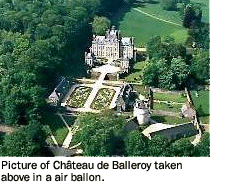 King
Louis XIII overthrew all the little papal kingdoms in France
and became an absolute ruler with the most powerful army in
Europe. Thus, there was no longer a need for medieval fortified
castles and moats. This new freedom created a radical change
in the lifestyles of the French nobility, who could now live
in chateaux and palaces surrounded by fountains and gardens
instead of axillaries and fortified walls. Mansart saw this
need for a modern movement in architecture and to break away
from the archaic Gothic style. He is considered one of the
most accomplished of 17th-Century French architects; his work
is known for its degree of classical balance and elegance.
His contributions to French style and taste were continued
by his great-grandnephew Jules Mansart ( born 1646 ) who served
as Louis XIV’s chief architect. Together they created
some of the most important and historic buildings in France
during the 17th and 18th centuries. King
Louis XIII overthrew all the little papal kingdoms in France
and became an absolute ruler with the most powerful army in
Europe. Thus, there was no longer a need for medieval fortified
castles and moats. This new freedom created a radical change
in the lifestyles of the French nobility, who could now live
in chateaux and palaces surrounded by fountains and gardens
instead of axillaries and fortified walls. Mansart saw this
need for a modern movement in architecture and to break away
from the archaic Gothic style. He is considered one of the
most accomplished of 17th-Century French architects; his work
is known for its degree of classical balance and elegance.
His contributions to French style and taste were continued
by his great-grandnephew Jules Mansart ( born 1646 ) who served
as Louis XIV’s chief architect. Together they created
some of the most important and historic buildings in France
during the 17th and 18th centuries.
François was born to a master
carpenter. He was not trained as an architect but as a mason
and a sculptor. He is thought to have learned his architectural
skills in the studio of Salomon de Brose, the most popular
architect of Henry IV's reign. Mansart was well known by the
1620s for his technique and classical approach as a draftsman,
but he was seen as an obstinate and demanding perfectionist.
Only an aristocrat like the chancellor to Gaston d'Orleans
could afford to commission him since production costs were
so high due to his attention to every detail. In 1626 Mansart
redesigned and rebuilt the chateau of Balleroy. The duke was
so proud of the results that he invited Mansart to renovate
his other chateaux. With obsessive attention to every design
element, Mansart’s construction designs ingeniously
used a classical plan. This remarkable castle of the purest
Louis XIII style was the property of the family of Balleroy
until 1970, when the famous American editor Malcolm Forbes
acquired it and created the world’s first Air Balloon
museum on the property.
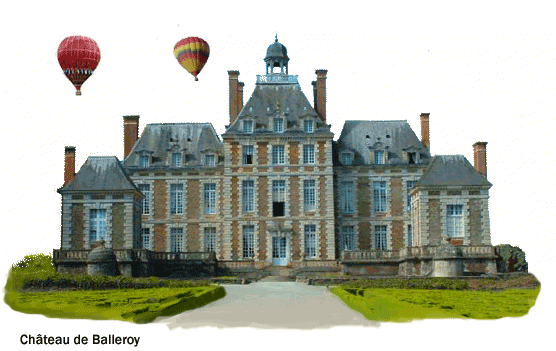 |
|
| |
|
 |
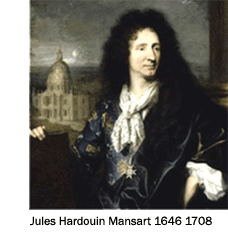 |
| Jules Hardouin-Mansart 1646–1708 represents both the summit of French Baroque architecture and the supremacy and splendor of Louis XIV. He carried on his great-uncle's legacy with his impeccable style and demand for perfection. He actually studied under his renowned great-uncle François who taught him the classical order of architecture. Jules inherited his great-uncle's collection of plans and drawings and adopted his well-regarded name. He also studied with Libéral Bruant, architect of the royal veteran's hospital in Paris known as Les Invalides. Jules served as King Louis XIV's chief architect, first enlarging the royal chateau of Saint-Germain-en-Laye, then at Versailles from 1675. |
|
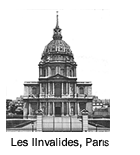 He
was the director and architect of all the new royal additions
at Versailles in 1710 including the north and south wings,
the Royal Chapel on which he collaborated with Robert de Cotte,
and the celebrated Hall of Mirrors decorated by Charles Le
Brun. Outside the chateau proper he built the Grand Trianon
and the Orangerie, as well as additional royal apartments
not far away. He
was the director and architect of all the new royal additions
at Versailles in 1710 including the north and south wings,
the Royal Chapel on which he collaborated with Robert de Cotte,
and the celebrated Hall of Mirrors decorated by Charles Le
Brun. Outside the chateau proper he built the Grand Trianon
and the Orangerie, as well as additional royal apartments
not far away.
His best-known works in Paris are the Pont Royal, the great domed royal chapel Eglise du Dome dedicated to Saint Louis at Les Invalides (designed in 1680), the Place des Victoires (1684-86) followed by the Place Vendôme (1690). These works still set their imprint on the character of Paris. His position in France put him in place to create many historical monuments designed in a late Baroque architectural style influenced by Islamic Mosques in Turkey. He became one of the most important European architects of the 17th century.
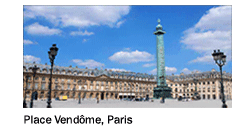 In his later years Jules created his masterpiece the château of Dampiere-en-Yvelines. The masterly design commissioned by the Duc de Chevreuse ingeniously revived his great-uncle's famous mansard roof which he modeled and executed to perfection. The paved and gravel forecourt known as cour d'honneur is protected behind finely fashioned iron double gates. Its spaces are enclosed by the main block and its outbuildings known as corps de logis, and connected by symmetrically arranged balustrades, with a modest pediment entrance bordered by two projecting pavilions. Behind, the central axis is an extended formal garden and fountains laid out by André Le Nôtre. Jules’ sumptuous interiors of the chateau are perfectly intact, making it one of France’s most important architectural marvels. In his later years Jules created his masterpiece the château of Dampiere-en-Yvelines. The masterly design commissioned by the Duc de Chevreuse ingeniously revived his great-uncle's famous mansard roof which he modeled and executed to perfection. The paved and gravel forecourt known as cour d'honneur is protected behind finely fashioned iron double gates. Its spaces are enclosed by the main block and its outbuildings known as corps de logis, and connected by symmetrically arranged balustrades, with a modest pediment entrance bordered by two projecting pavilions. Behind, the central axis is an extended formal garden and fountains laid out by André Le Nôtre. Jules’ sumptuous interiors of the chateau are perfectly intact, making it one of France’s most important architectural marvels.
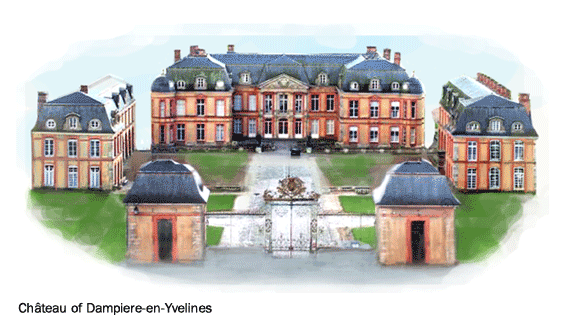
|
|
|
| Copy And Illustrations by Genius dick brafford at orpheusweb.com |
|
 |
 |
 |
 |
|

